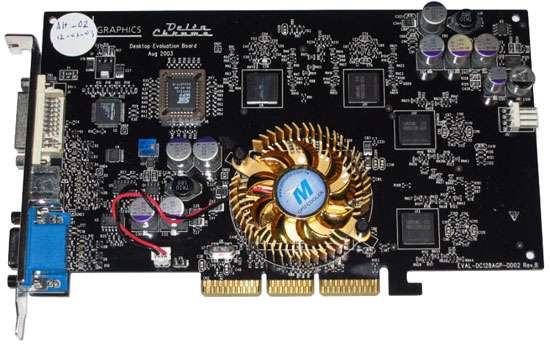Drivers VIA Motherboards
Summary :
Motherboards / Components. Enter a model name or select a product to find drivers, manuals, warranty information and more. VIA & VIA Technologies drivers for Microsoft Windows VIA Technologies, Inc is the foremost fabless supplier of power efficient x86 processor platforms that are driving system innovation in the PC. Combining energy-saving processors with digital media chipsets and advanced connectivity, multimedia and networking silicon enables a broad spectrum.
How do I find my motherboard in Device Manager? You may ask how to find out what motherboard I have? Do you know how to check motherboard drivers? This post from MiniTool will show you how to find the motherboard and drivers in Device Manager?
The motherboard, also known as system board, is the main circuit board, is the main printed circuit board found in general purpose computers or other expandable systems. It is an essential part of the computer. It holds and allows communication between many of the crucial electronic components of a system, such as the CPU, and memory, and provides connectors for other peripherals.
How to Find Out What Motherboard I Have?
However, how to find out what motherboard I have? This would be a common question.
In fact, there are many ways to find out the motherboard module on your computer. You can find it via Command Prompt, Windows System Information, and PowerShell.
You may be familiar with finding the motherboard module through Windows System Information and the Command Prompt.
For more detailed instructions, you can read the post: How to Find Your PC Motherboard Model and Serial Number
Hence, how do I find my motherboard in Device Manager or how to check motherboard drivers in Windows 10?
So, in the following section, we will show you where to find motherboard in Device Manager.
How Do I Find My Motherboard in Device Manager?
In this part, we will show you how to find motherboard in Device Manager or check motherboard drivers.
Now, here is the tutorial.
1. Press Windows key and R key together to open Run dialog.
2. Type devmgmt.msc in the box and click OK to open Device Manager.
3. In the Device Manager window, expand the Display Adapters. If our computer has built-in video – referred to as integrated video, the driver for the video chips on your motherboard is shown here. If you have a graphics card, please ignore this.
4. Then open IDE ATA/APAPI controllers. If there is an integrated drive electronics or IDE hard drive, the interface it plugs into on your motherboard is called a controller. If the computer is fairly new, we may not see the IDE controller since it has been replaced by SATA.
5. Then expand the IEEE 1394 Bus host controllers. Then we can find the drivers for any Firewire controllers on the motherboard.
Drivers Via Motherboards Wireless
6. Then expand the Network adapters. Under the AMD or Intel brand name, we will see the built-in network adapter.
7. Then open Sound, video and game controllers. Then you will find the controller drivers for the sound and video adapters.
8. Expand the Storage controller. There are Serial ATA or SATA controller drivers. The controller is the interface with the motherboard.

Drivers Via Motherboards Drivers
9. Then expand Universal Serial Bus controllers. All of the USB controller drivers will be listed here.
10. Then expand the System devices. We can find the remaining motherboard drivers here, including the memory controller, PCI bus driver, system speaker and clock.
When all steps are finished, you have successfully checked motherboard drivers. Hence, how do I find my motherboard in Device Manager? Check the above way.
However, if you want to upgrade the motherboard, you can read the post: How to Upgrade Motherboard and CPU without Reinstalling Windows
Final Words
To sum up, this post has shown how to find out what motherboard I have Windows 10 and where to find motherboard in Device Manager. In general, you can check the motherboard in Device Manager.
Users who have motherboards with onboard audio (often with VIA, Realtek, or C-Mediachipsets) may have issues with their audio or AC'97 errors in Device Manager. Often this is caused because the operating system was reinstalled and the motherboard chipset drivers were not installed. To resolve this issue, review the troubleshooting sections below.
Let Windows re-detect drivers
If you have not recently reinstalled Microsoft Windows, your audio drivers are corrupt. Open Device Manager and remove all devices under Sound, video and game controllers and any Other devices. Once removed, reboot the computer and let Microsoft Windows re-detect the audio drivers.
Motherboard chipset drivers
Reinstalling the motherboard chipset drivers resolve this issue. If your computer came with a motherboard CD, install the chipset drivers from the CD and the sound drivers if also available.
If you do not have a motherboard CD, obtain the motherboard chipset drivers from the motherboard manufacturer.
TipIf your computer has no disc drive, you'll need to download the drivers from the manufacturers website.
Sound card drivers
If, after installing the motherboard chipset drivers, you continue to have issues, install the sound drivers. We suggest downloading the sound drivers from the computer manufacturer or motherboard manufacturer website.
For a list of motherboard manufacturers and their drivers, see our motherboard chipset drivers index.
Check the sound card
Additional information
- See our sound card definition for further information and related links.
